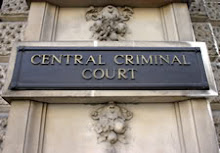Independent online By Robert Verkaik, Law Editor
Published: 24 February 2007 .
His name may not be as recognisable as John Christie, the Krays or Dr Crippen. But the prosecution of Horace Rayner was, for its time, as sensational as any of the cases to have graced the dock of Britain's most famous court.
Rayner's appearance at the Central Criminal Court in May 1907 resulted in him acquiring the dubious honour of being the first defendant to be convicted of murder at the Old Bailey.
Next week Rayner's trial, and the trials of many others, will be remembered at the iconic court, which celebrates 100 years of justice with a week of commemorations.
Horace Rayner appeared in the dock of the Central Criminal Court in 1907 accused of shooting dead the department store magnate William Whiteley, a man who Rayner claimed was his father.
He pleaded not guilty by reason of temporary insanity, and argued that his victim had preached a life of high morality yet had hidden the fact he had an illegitimate son.
It was a defence that failed to persuade the jury, who duly returned a guilty verdict - leaving the judge with no option but to sentence him to death.
But media and parliamentary interest in the trial had gripped the Edwardian public, who raised a petition for clemency, collecting 200,000 signatures in the first week.
In the end, the home secretary of the day bowed to public opinion and commuted Rayner's sentence to one of life imprisonment.
Rayner served twelve years before being released in 1919 on licence.
Since the trial of Horace Rayner 100,000 more defendants have stood in the dock of the Old Bailey.
London's most famous courthouse was built in Portland stone in 1907 on the site of Newgate Gaol, where drinkers at the nearby Magpie and Stump were regularly treated to the spectacle of public hangings.
Old Bailey judges still on ceremonial occasions carry posies of flowers, with which their predecessors protected themselves against both gaol fever and the prevailing stench.
On top of the dome is the golden statue of Justice, clasping the famous sword and scales, but not blindfolded like its American counterpart.
The building is officially the Central Criminal Court, but has become affectionately known as the Old Bailey, which is the name of the street and comes from the rampart - also known as a bailey - constructed just outside the wall of the City in Norman times.
Above the door of the court, which opened on February 27, 1907, is the motto: Defend the Children of the Poor & Punish the Wrongdoer.
Despite the achievement of Elsie Bowerman, who in 1920 became the first female barrister to appear in the Old Bailey, female judges have failed to make an impression here. Judge Ann Goddard QC is the only woman sitting single at the Central Criminal Court.
Next week the Queen and the Duke of Edinburgh will mark the centenary of the Old Bailey by attending a reception hosted by the judges and the Lord Mayor of London.
'Trials of the century'
* DR CRIPPEN
Hawley Harvey Crippen was found guilty of murder and hanged in November 1910 for killing his wife. His trial at the Old Bailey revealed the meticulous manner in which he had disposed of her body. After killing her, he removed her bones and limbs, which he then burned in the kitchen stove. Her organs were dissolved in acid in the bathtub, and her head was placed in a handbag and thrown overboard during a day trip to France. It took the jury only 27 minutes to reach their verdict.
* WILLIAM JOYCE
American-born Joyce gained notoriety as Lord Haw Haw - the nickname given to the announcer on Germany Calling, an English-language propaganda programme broadcast during the Second World War. He was captured in Germany as the war ended, tried for treason at the Old bailey and hanged on 3 January 1946.
* THE KRAYS
Ronnie and Reggie first appeared at the Old Bailey in 1950, then 17, in an assault case that collapsed due to lack of evidence. In 1969 they were brought to court for the murder of Jack "The Hat" McVitie. Many witnesses came forward. The twins did not really have a defence. Both were sentenced to life imprisonment, with a non-parole period of 30 years. Their brother, Charlie, was jailed for 10 years for his part in the murders.
* PETER SUTCLIFFE
The man known as the Yorkshire Ripper pleaded not guilty to 13 counts of murdering prostitutes, but guilty to manslaughter. His trial lasted just two weeks; he was found guilty and sentenced to life imprisonment. The trial judge recommended that a minimum term of 30 years should be served before parole could be even considered. Sutcliffe is unlikely to be freed until at least 2011.
* THE MAXWELLS
Ian and Kevin Maxwell were cleared of conspiracy to defraud the Mirror pension funds in 1995. Ian Maxwell's barrister accused the media of maliciously trying to slander his client and making a "sick joke" out of the Maxwells. "But this case has been no joke for Ian Maxwell, it has been purgatory." He had waited three and a half years to demonstrate his innocence.
* JEFFREY ARCHER
Archer won a libel case against the Daily Star in 1987 after they accused him of visiting a prostitute. A decade later, a former friend and Archer's secretary came forward to say he had fabricated an alibi. He found himself back in the dock in 2000. Despite being confident enough to star in his own play (The Accused) at the time, he was sent down for four years in July 2001.

No comments:
Post a Comment